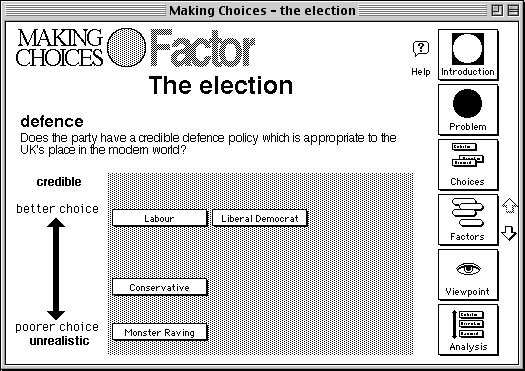
[5], [6], [7] When modelling on computers, one of the many tasks is to define elements in the model and to consider how to represent them in terms of measurement. Depending upon the reason for measuring and upon who is doing it, the precision of the measurement scale may vary from crude dichotomy to a definite multiple calibration.

The 'mathematical' or 'pure' measurement has the following characteristics: unequivocal order, equal intervals and unambiguous zero. Because of these three features, you can perform the normal mathematical operations with elements measured on this kind of scale. The assumptions about ordering and equality of intervals enable you to add and subtract and, because of the unambiguous zero, you can also multiply and divide. Statisticians call this a RATIO SCALE. Weight of objects is an example of measurement which is on a ratio scale. A man weighing 80kg is certainly twice the weight of a child weighing 40kg.
'Topological measurement' may be thought as employing numerals rather than numbers and, because it always deviates in some respect or other from the features of 'mathematical measurement', it sets limits upon the extent to which ordinary arithmetic can be used to make comparisons. The simplest kind of numeral scale is the NOMINAL SCALE. In a nominal scale there is naming but not ordering. Properties are broken down into equivalent classes, but these classes are not ranked with respect to one another, although if numerals are used to denote the classes it is easy to mistakenly imagine that they can be. The only rule for the formation of such scales is that the classes be mutually exclusive.
On the other hand, ORDINAL SCALEs are topological scales which simply order the elements or features of elements with respect to one another. In creating an ordinal scale you put elements in some order but without a pretence of maintaining equal intervals between the elements. Clearly such scales do not permit of even simple arithmetic operations like addition and subtraction. This is the scale which is used in "Making Choices" for ranking factors and choices.
There is, however, a form of 'topological measurement' in which numerals can be assigned to properties in such a way that some sums can be performed. INTERVAL SCALEs may be constructed to rank features in a manner which relies upon the assumption of equality of intervals between classes. Obviously such numerals will permit of simple addition and subtraction, but, because a zero is not recognised, multiplication and division are still ruled out as unreasonable operations. The temperature in degrees centigrade of things is an example of measurement which is on an interval scale. In scientific terms its unreasonable to say that an object at 80° is twice the temperature of an object at 40°. The zero on the centigrade scale is arbitrarily the freezing point of water.
Summarising the characteristics of the four type scales listed above: